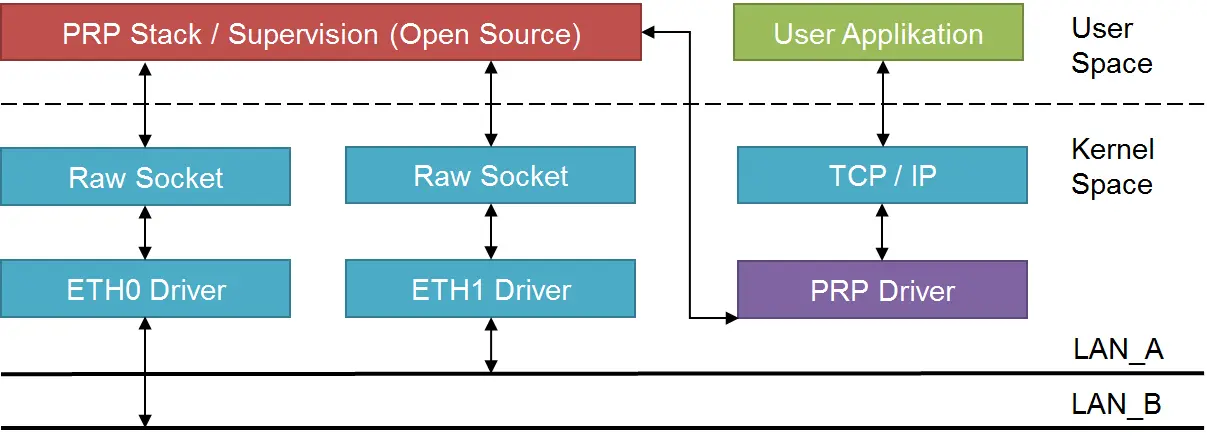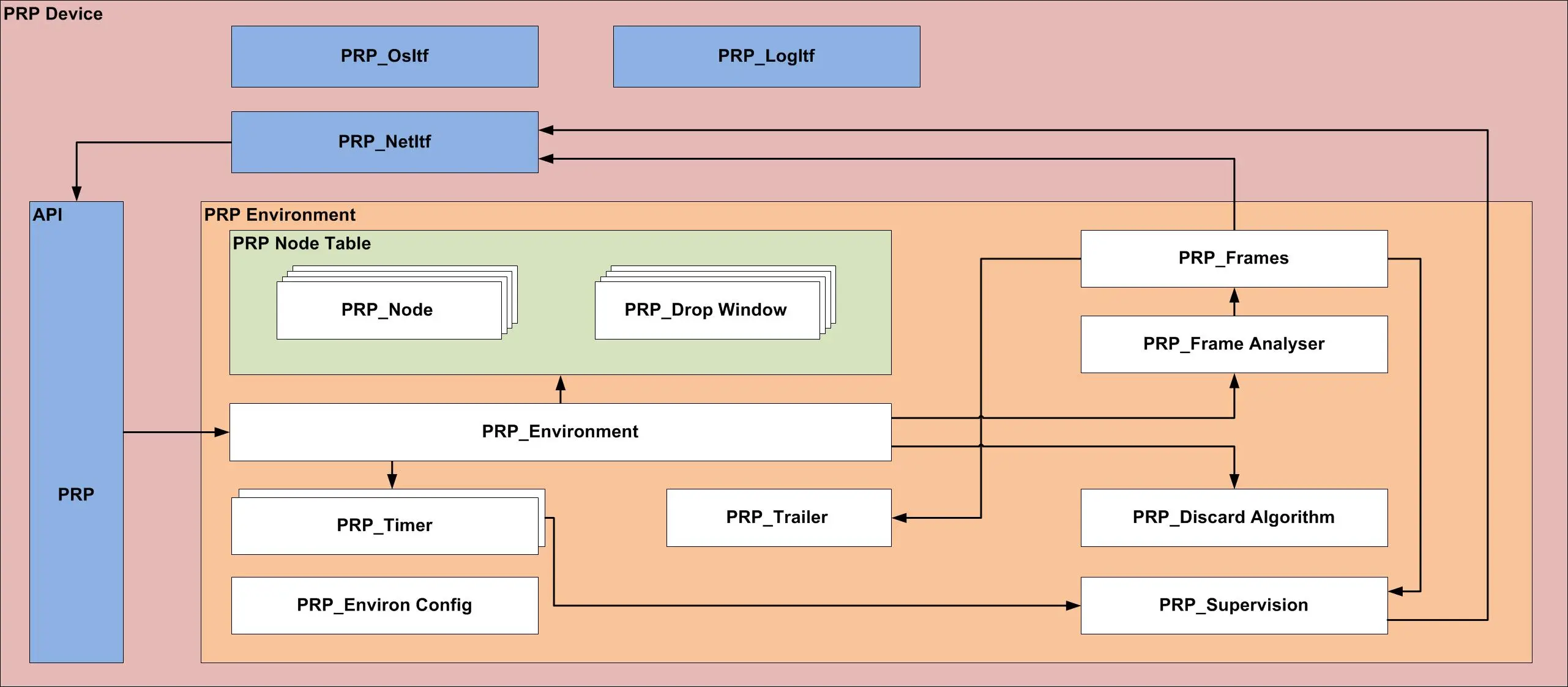PRPv1 Software Stack
The parallel redundancy protocol (PRP) implements redundancy in the devices. An end node is attached to two independent LANs (LAN_A and LAN_B) which are operated in parallel. Thus a node needs two ports that operate simultaneously (ETH0 and ETH1) and that are attached to the same PRP instance.
In software PRP is implemented as an intermediate layer that communicates with the upper layers by a virtual network device (PRP Driver). This layer presents toward its upper layers the same interface a non-redundant network device.
PRP transparently generates and handles duplicates. When sending a frame it received from the upper layers, PRP is sends the frame through both ports at nearly the same time. When receiving, PRP forwards the first received frame to its upper layers and discards the duplicate frame.
Besides the handling of duplicates the PRP also manages the redundancy. To supervise redundancy it appends to each sent frame a 32-bit redundancy control trailer (RCT) and removes that RCT at reception.
PRP-1 User Mode Stack

For the evaluation of the PRP stack we provide open source software for Linux. The code covers the handling of duplicates as well as the supervision functions. Thanks to the user mode execution the algorithms they can easily be traced and tested.
Services
PRP Training
Training at School of Engineering in Winterthur, Switzerland:
- PTP Software (Protocol Stack / Abstraction Layer, porting to other platforms)
- PTP VHDL code for a Redundancy Box
- Other forms of training upon request
PRP Support
Support (per e-mail, phone etc.)
- PTP Software (Protocol Stack / Abstraction Layer, porting to other platforms)
- PTP VHDL code for the time stamping unit
- IEEE1588 / PTP in general
- Other forms of support upon request
The amount and kind of support will be defined in a contract between the customer and ZHAW / InES.

Download
Online Order Form
We provide the PRP stack as open source software at no charge.
Please accept the software license agreement and send the registration form.